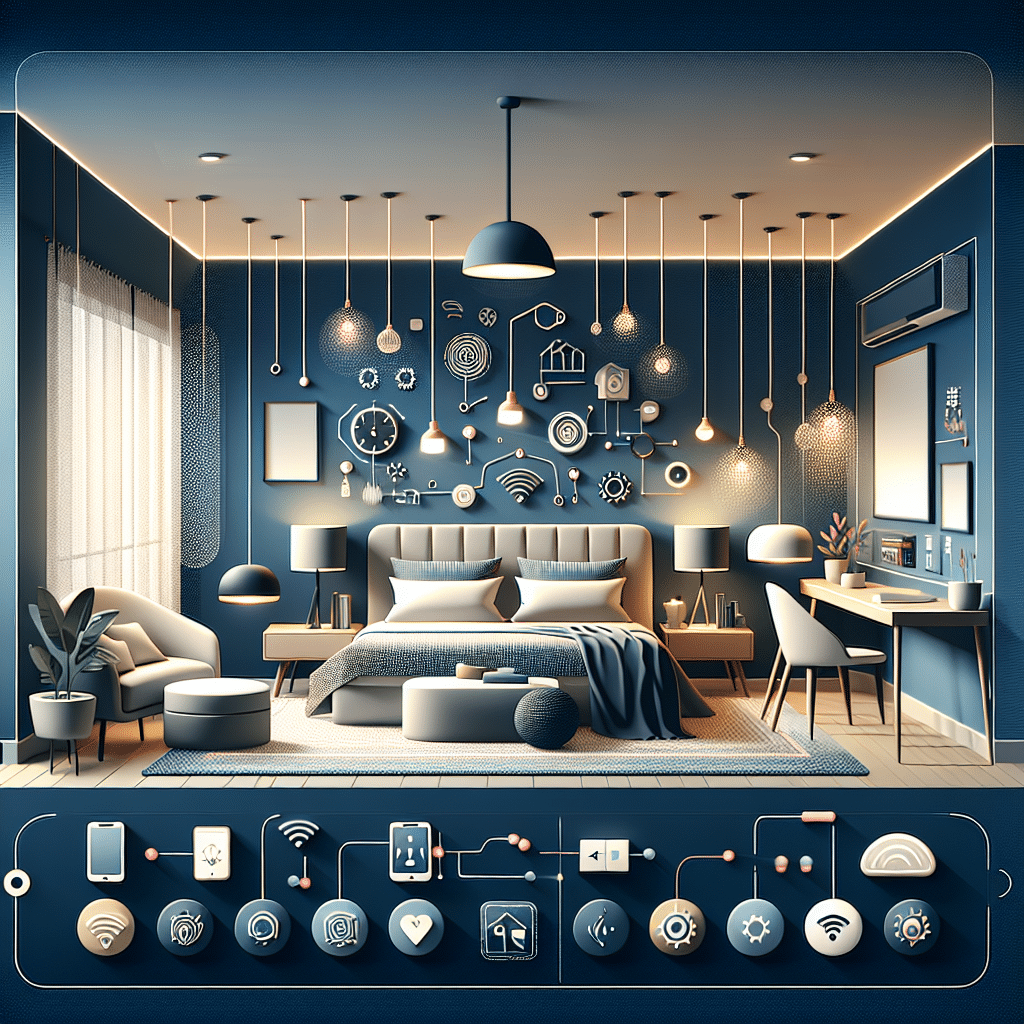Understanding Smart Lighting Technology
Smart lighting refers to lighting solutions that can be controlled wirelessly through a smartphone, tablet, or smart home device. Features often include remote dimming, color adjustments, and scheduling capabilities. DIY smart lighting for a bedroom can enhance ambiance, improve energy efficiency, and incorporate customization tailored to individual lifestyles. With the right tools and knowledge, transforming your space into a smart lighting haven is easier than you think.
Choosing the Right Smart Bulbs
When selecting smart bulbs, consider compatibility with your existing fixtures and the desired functionalities. Options include:
- Wi-Fi Bulbs: Directly connect to your home Wi-Fi network. They are easy to install but may rely on a stable internet connection.
- Zigbee & Z-Wave Bulbs: These utilize a hub to connect devices, creating a more reliable network, especially in larger homes.
- Bluetooth Bulbs: Ideal for smaller setups, Bluetooth bulbs connect directly to smartphones but have limited range.
Choose bulbs with adjustable brightness and color temperature settings to suit different moods and activities, such as reading or sleeping.
Setting Up Your Smart Lighting
-
Inventory Your Space: Assess where you want smart lighting for mood creation, accentuating décor, or practicality.
-
Install Smart Bulbs:
- Ensure you turn off the light switch before installing.
- Unscrew existing bulbs and replace them with smart bulbs.
- Follow the manufacturer’s instructions to ensure a proper connection.
-
Download the Smart App: Most smart bulbs come with a dedicated app. Download it to configure your bulbs, set up your preferences, and control lighting remotely.
-
Controller Options: If you prefer voice control, consider integrating with Google Assistant, Amazon Alexa, or Apple HomeKit. This enables hands-free operations.
Creating Ambiance with Color
Smart lighting allows you to play with colors to create varied atmospheres. To set the ideal mood:
- Warm White: For relaxation before sleep.
- Cool White: For a refreshing morning vibe.
- Colored Lights: Use blues and greens to create a serene environment, or reds and yellows to energize your space.
Most apps allow creating schedules; for example, program a gradual brightening effect in the morning to mimic a sunrise.
Automation and Scheduling
Automation enhances convenience and energy efficiency. To set this up:
- Create Routines: Configure routines for common activities like “Good Night” or “Wake Up.” The lights can gradually dim at bedtime or brighten slowly during morning hours.
- Use Geofencing: Some smart lighting apps allow lights to turn on or off automatically when you enter or leave your home.
Integrating with Other Smart Devices
Enhancing your DIY setup involves integrating lighting with other smart devices:
- Smart Plugs and Dimmers: Pair smart plugs with non-smart lamps to control old bulbs.
- Smart Sensors: Install motion sensors to automate lights based on room occupancy, minimizing wasted energy.
- Voice Assistants: For high convenience, pairing your smart lighting with a voice-activated assistant allows for control from anywhere in the bedroom.
Energy Efficiency and Management
Smart lighting offers great potential for energy savings. Features to utilize include:
- Energy Monitoring: Some smart bulbs offer feedback about energy consumption, helping identify ways to reduce usage.
- Remote Control: Being able to turn off lights remotely ensures you never leave lights on accidentally.
Maintenance Tips for Longevity
To ensure your smart bulbs continue working effectively:
- Regular Updates: Keep apps and firmware updated for optimal functionality and security.
- Clean Your Fixtures: Dust accumulation can affect the performance of bulbs and dimmers; clean them regularly.
- Monitor Performance: Be aware of any dimming issues or connectivity problems, as these could signal a need for replacement.
Safety Considerations
While setting up your smart lighting, always prioritize safety:
- Use Compatible Brands: Mixing brands may lead to connectivity issues.
- Secure Your Network: Use strong passwords to protect against unauthorized access.
Exploring Advanced Features
Some smart lighting systems offer advanced features worth investigating:
- IFTTT Integration: “If This Then That” allows you to create sophisticated automation rules. For example, if your home security system is armed, your smart lights can turn off.
- Multi-Room Control: Set up synchronized lighting across multiple rooms for a cohesive aesthetic.
Ideal Smart Lighting Configurations
-
Reading Nook: Combine soft white smart bulbs with a smart floor lamp. Use a higher Kelvin temperature for focused reading.
-
Mood Lighting: Install color-changing LEDs along the wall or behind furniture. Use the ambient light feature via app control to switch colors based on your mood.
-
Task Lighting: For studying or working from bed, install smart desk lamps that can be easily adjusted for brightness.
Experimenting with Light Shades
Explore using light shades to modify how the light interacts with the room:
- Diffusing Shades: Softens the light for a more gentle ambiance.
- Reflective Shades: Enhance light spread, maximizing brightness.
Additional Accessories
Consider these accessories for expanded functionality:
- Smart Switches: Control multiple lights from one switch, adding convenience.
- Light Strips: Perfect for trailing lights under shelves or frames, offering both functionality and style.
Finalizing Your Setup
Ensure that all components are well integrated; test each smart bulb, app function, and automation routine. Experiment with various configurations until you find what best suits your lifestyle. Smart lighting is about personalization and comfort, helping transform your bedroom into a serene oasis. With the right tools and creativity, your DIY smart lighting installation can adapt to any situation, making your bedroom more functional and enjoyable.
